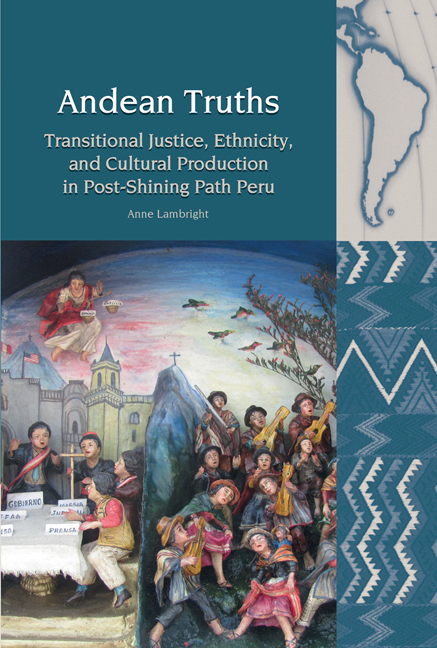Book contents
- Frontmatter
- Contents
- List of Figures
- Acknowledgements
- Introduction
- 1 Sustaining Dominant Narratives
- 2 Transitional Justice and Reconciliation through Identification
- 3 Dead Body Politics
- 4 Towards a Narrative Pachacutic
- 5 Collaborative Truth-Telling
- 6 Reconciling through other Knowledges
- 7 Conclusion
- Works Cited
- Index
Introduction
- Frontmatter
- Contents
- List of Figures
- Acknowledgements
- Introduction
- 1 Sustaining Dominant Narratives
- 2 Transitional Justice and Reconciliation through Identification
- 3 Dead Body Politics
- 4 Towards a Narrative Pachacutic
- 5 Collaborative Truth-Telling
- 6 Reconciling through other Knowledges
- 7 Conclusion
- Works Cited
- Index
Summary
During the 2005 Holy Week celebration in Huamanga, Ayacucho, a group calling itself Ama Qunqanapaq (a Quechua phrase meaning ‘so as not to forget’) distributed leaflets among the thousands of national and international tourists that had gathered for one of Peru's most famous religious festivals. After almost two decades of violence that had devastated the region, the re-establishment of the opulent Holy Week celebrations at the end of the 1990s symbolized renewed peace and stability in the region; Ayacucho was once again safe for tourists (and economic development). But, for many, the festivities of Holy Week also underscored a national culture of silence, a collective amnesia, an unvoiced mandate to forget the atrocities that had marked the region since Shining Path began its terrorizing revolutionary campaign in 1980 and the government responded with equally brutal force soon thereafter. In 2005, less than two years after the Comisión de la Verdad y Reconciliación (Truth and Reconciliation Commission, or CVR) concluded its monumental truth-gathering mission, determining that the internal conflict had resulted in 69,280 dead or disappeared Peruvians, 75 percent of them indigenous, to Ama Qunqanapaq, the country seemed in danger of once again slipping into amnesia. The leaflets they distributed contained a Mapa de la memoria (memory map), an alternative cultural tour of the city of Huamanga, which, rather than leading tourists to the city's much-touted thirty-three churches, instead marked thirty-two sites where gross human rights violations had occurred. In a context where public space and culture are often battlefields of meaning (and of the right to confer it), the Mapa de la memoria sought to wrest from the celebrations the dominant message of peace and reconciliation promoted during the transitional justice period in Peru and to re-symbolize Ayacucho, making visible the scars of a horrific national period that authorities had sought to conceal with fresh paint and pious, but tourist-attracting, celebrations.
The distribution of the Mapa de memoria performs one of many acts of resistance to more official (state and non-governmental) attempts to construct post-conflict Peru as a reconciled (or at least reconciling) nation that has moved beyond the horrors of the Shining Path era. This study considers others, creative cultural products that process the period and its aftermath and that shed light on essential questions of race, ethnicity, and national culture(s).
- Type
- Chapter
- Information
- Andean TruthsTransitional Justice, Ethnicity, and Cultural Production in Post-Shining Path Peru, pp. 1 - 29Publisher: Liverpool University PressPrint publication year: 2015



